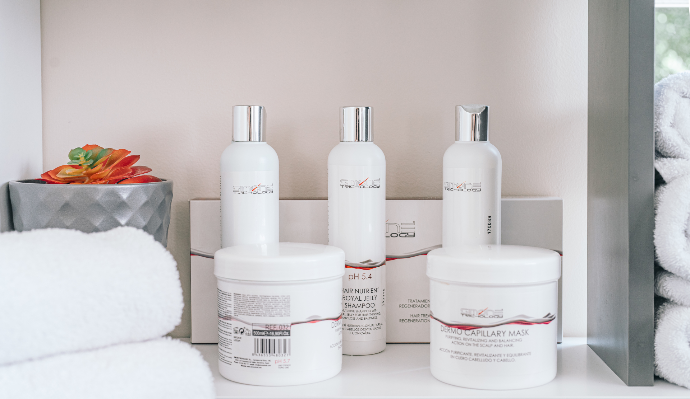THE HAIR
We could define hair as an attribute of mammals. The cylindrical filament is thin and corneous, which animals use to maintain body temperature and as a defense (camouflage).
In humans, the functions of hair are not just ornamental. It is a unique feature that sets us apart from other mammals, and there are studies linking this ornament with sexual attraction

Chemical Composition of the Hair
The hair itself is composed of 28% protein, of 28% protein, about 2% lipid, and 70% water.
The most abundant protein is keratin, a protein consisting of polypeptide chains rich in cysteine.
The main elements are carbon (C) at 45%, oxygen (O) at 30%, nitrogen (N) at 15%, hydrogen (H) at 6%, and sulfur at 6%, and sulfur (S) at 5%, To awe can locate calcium (Ca), copper (Cu), cadmium (Cd), mercury (Hg), zinc (Zn), lead (Pb), iron (Fe), arsenic (As), silicon (Si), magnesium (Mg), uranium (U), vanadium (V), sodium (Na) and potassium (K). lesser extent,
We could define hair as an attribute of mammals. The cylindrical filament is thin and corneous, which animals use to maintain body temperature and as a defense (camouflage).
In humans, the functions of hair are not just ornamental. It is a unique feature that sets us apart from other mammals, and there are studies linking this ornament with sexual attraction
Structure of Hair
The hair is divided into two essential parts: the root and the root and the shaft.
The root is the part where a high metabolicc, high metabolic and mitotic activity occurs.
The root ends in the bulb, which accommodates the dermal papilla in a central hole, carrying the blood supply to the hair.
The shaft is thThe shaft is the part of hair that consists of three concentric layers of cells: medulla, cortex, and cuticle. Its diameter is approximately 70 to 100 microns, and its breaking load is 40 to 60 grams.
The medulla accounts for 21% of the hair's total surface area. It is located in the central part, formed like an irregular honeycomb, and composed of cornified rounded cells without a core and devoid of pigmentation.
It does not influence the physicochemical behavior of the hair. Some hairs may have a mess, a medulla continuous, discontinuous, or even lack it. Nonexistent in the lanugo of the fetus.
THE CORTEX has a total area in the hair of 70%. It consists of cell layers that extend between the cuticle and the medulla. It is responsiblt is responsible for its strength, elasticity, flexibility, size, shape, and texture; in short, it is responsible for the mechanical properties of hair.
CUTICLE represents 9% of the total area of hair; it is the outermost layer composed of flattened cells extending along the shaft surface, overlapping like a roof tile is treated. These cells are transparent and form the protective layer resistant to the forces of chemistry and physical (side pulling, etc..). If this layer is damaged, cells cease to be members of the hair be of the hair because the hair becomes too porous, loses its transparency, and becomes opaque.
Life in the Hair
The life cycle of hair starts in the bulb, and then the DE and the DERMAL PAPILLA produce keratin layers of cells that determine the hairline.Hair grows between an inch and an inch and a half per month, and its life cycle varies from 3 to 5 years. After this, the hair this, the hair is completely blocked and gives a new germinative, another new h, another new hair papilla, and a comes. Regular hair comprises a variable number of hairs, between 100,000 and 150,000. Write something...
